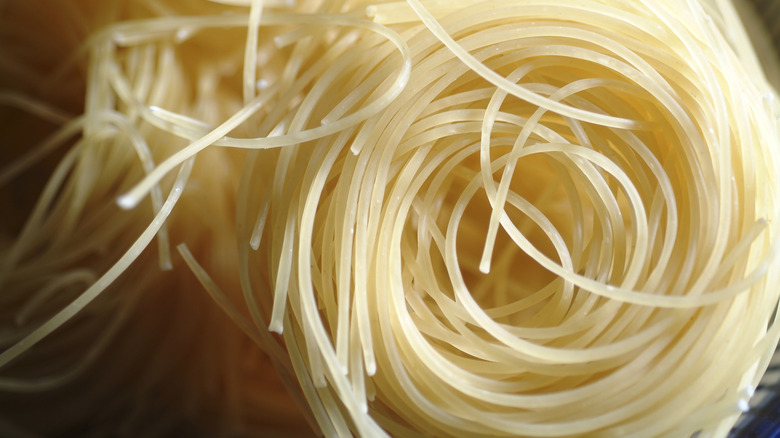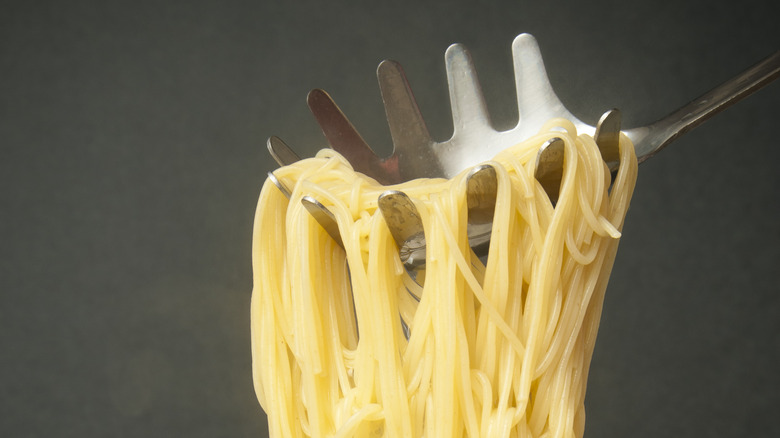The Biggest Mistake Everyone Makes With Angel Hair Pasta
If you have unpleasant memories of sticky, overcooked angel hair pasta, you're likely one of many who are part of the narrative that angel hair pasta tastes bad. That's nothing against you or others decrying this slender noodle, as there is some truth to the notion that cooking with angel hair pasta may lead to some unpleasant outcomes. This pasta shape may look like spaghetti, be identical in length, and be used in similar dishes, however, the minor difference in diameter causes problems for home cooks, resulting in less-than-delicious angel hair pasta.
The biggest mistake people make when cooking angel hair pasta is overcooking it. The fineness of the noodles means they can go from just right to baby food in a matter of seconds, so home cooks have to be extra vigilant about intentionally undershooting the recommended cooking time and tasting the noodles for texture as they approach completion. Another mistake people might not know they're making is using angel hair pasta that is too thin to work with comfortably. Buying angel hair pasta with a diameter on the thicker side — closer to .035 inches (0.88 millimeters) — will go a long way in helping the noodles not stick too much once they're in the saucepan or on the plate.
The best ways to cook angel hair pasta
There are a couple of ways to cook this delicate pasta shape that will have you and your fellow diners turning into bonafide angel hair converts. The first — and easiest — way is the traditional method of submerging the noodles in salted, boiling water and letting them cook. As mentioned earlier, be careful not to overcook them. When they are done, quickly transfer them into a bowl or pan so the noodles can be sauced. Stick with simple, lightweight sauces, like a basil pesto or a primarily olive oil-based dressing, to keep the noodles well lubricated so they don't clump together like a bird's nest.
Another approach to cooking angel hair pasta is more unorthodox and comparable to cooking risotto. This method involves using a shallow amount of water or stock and letting the noodles fully absorb the liquid as they cook. Doing this results in a starchy, creamy dish with perfectly cooked angel hair pasta, which you can toss with other toppings. This one-pot method avoids creating extra dishes (and headaches) but requires technical know-how. However, it also opens the door to adapting classic risotto recipes with angel hair pasta instead of rice, like creamy wild mushrooms or simple butter and garlic.

